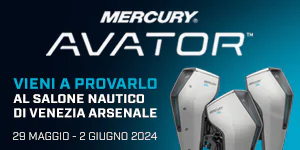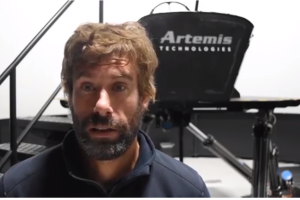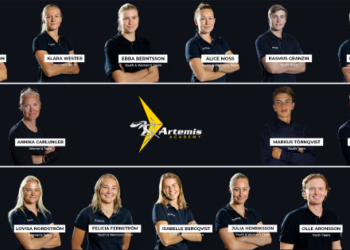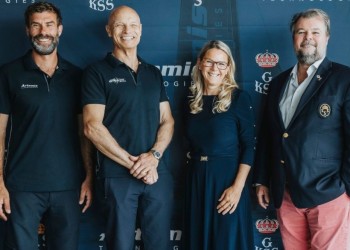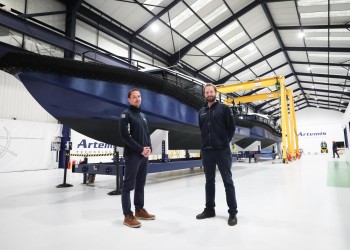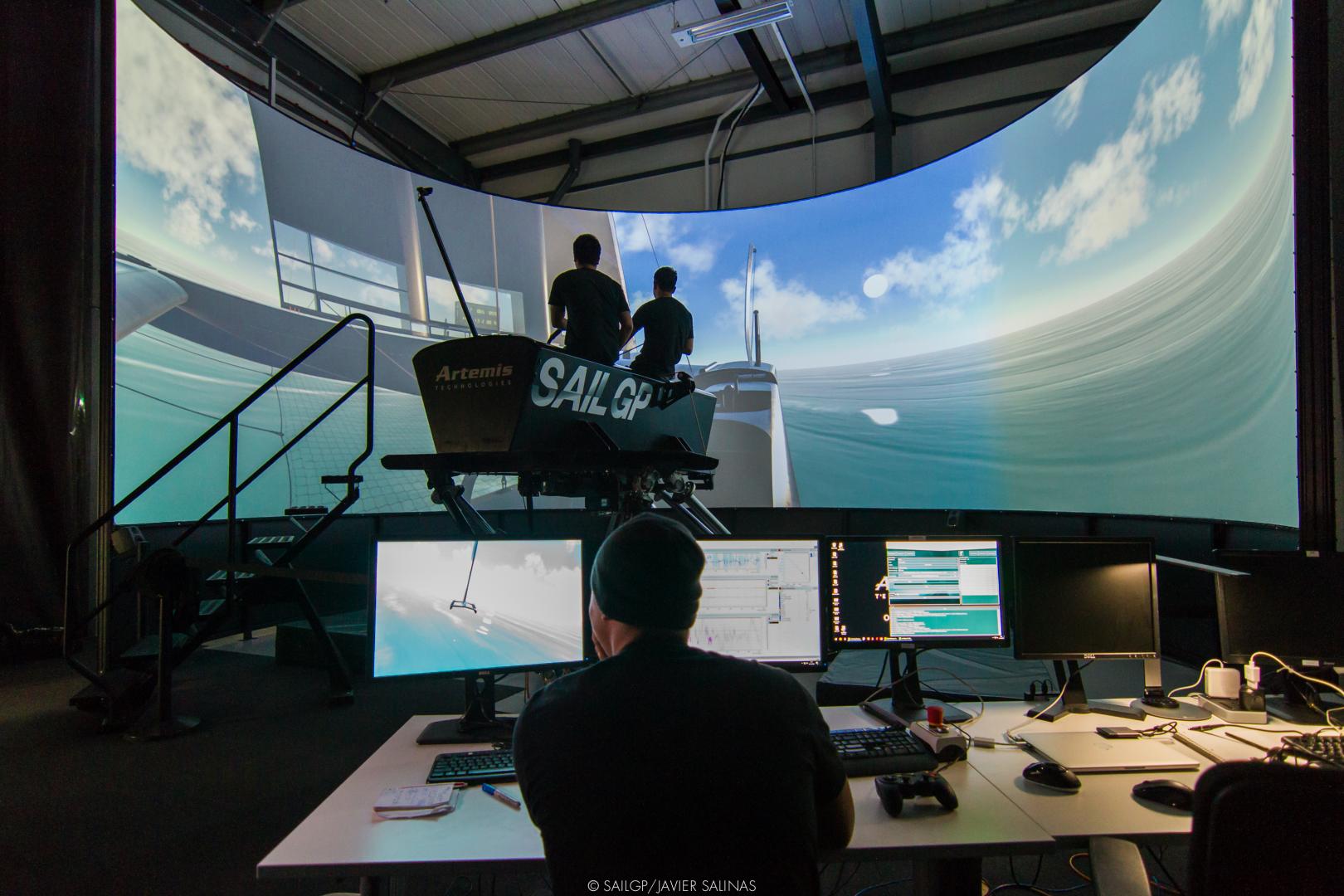
Artemis Technologies Unveil New Sailing Simulator
Artemis Technologies Unveil New Sailing Simulator
Artemis Technologies today unveiled the company’s latest piece of ground breaking technology, a new full-motion sailing simulator.
The 4.5 metre high, 210 degree screen, which conveys images from three laser phosphor projectors, is wrapped around a physical platform similar to those used for flight and motorsport simulators, providing an incredibly immersive experience.
Based at Artemis Technologies facility near Heathrow airport, the new simulator has been developed over the last 12 months, and is a continuation of the work undertaken by Artemis Racing during the last America’s Cup.
Artemis Technologies CEO, Iain Percy, said, “A simulator is a dynamic simulation of a machine, a car, a plane, or in this case, a boat. Technical sport is a marriage between human and machine, and a simulator is the point where all of that comes together. Artemis Racing did some great work in the last America’s Cup with dynamic modelling, but where we missed out, was integrating that human interaction”.
Lead Systems Engineer, Jonathan Nicols, continued, “Historically, simulation in the America’s Cup was quite siloed and focused on specific areas of work. It didn’t have a very holistic approach. Towards the end of the last America’s Cup, Artemis Racing had begun to integrate those simulations into a central package. This simulator is a continuation of that work and will enable us to make important design decisions much earlier. Traditionally we learn too much too late, only discovering whether the offline engineering has been successful once we get the boat in the water”.
The simulator has two key functions, crew training and boat development, and is currently optimised for SailGP using an identical cockpit to the new F50 high-performance catamarans.
The simulator’s realism is essential for crew training, which consists of familiarisation with the boat’s latest systems, rehearsing responses to emergency and failure modes, and building muscle memory and rhythm for maneuvers.
The new SailGP teams have each been given three days to learn how to sail the new foiling catamarans, in “real-time”, ahead of the circuit beginning early next year. “It is incredible,” commented Billy Besson, helmsman for the France SailGP team. "This is allowing us to get a feel for a new boat in a way that hasn’t been possible before”.
Dr Alex Reid, systems engineer at Artemis Technologies, who has been in New Zealand for the recent F50 sea trials, commented, “Even at its most fundamental level, the simulator saves a huge amount of time for teams learning to sail these extreme machines, but for us designers and engineers who have been in New Zealand, the ability to run and test systems on the simulator overnight, during the UK daytime, has proved key in the efficient development of the F50”.
The platform, or cockpit, can be changed for each new maritime application and Artemis Technologies have aspirations for the simulator to not only progress race programmes, but create a new commercial offer. “As technology becomes more prevalent in marine applications, it is not as easy to just design or buy a boat and launch it anymore. Simulators are an important part of the future of the industry,” concludes Nicols.





